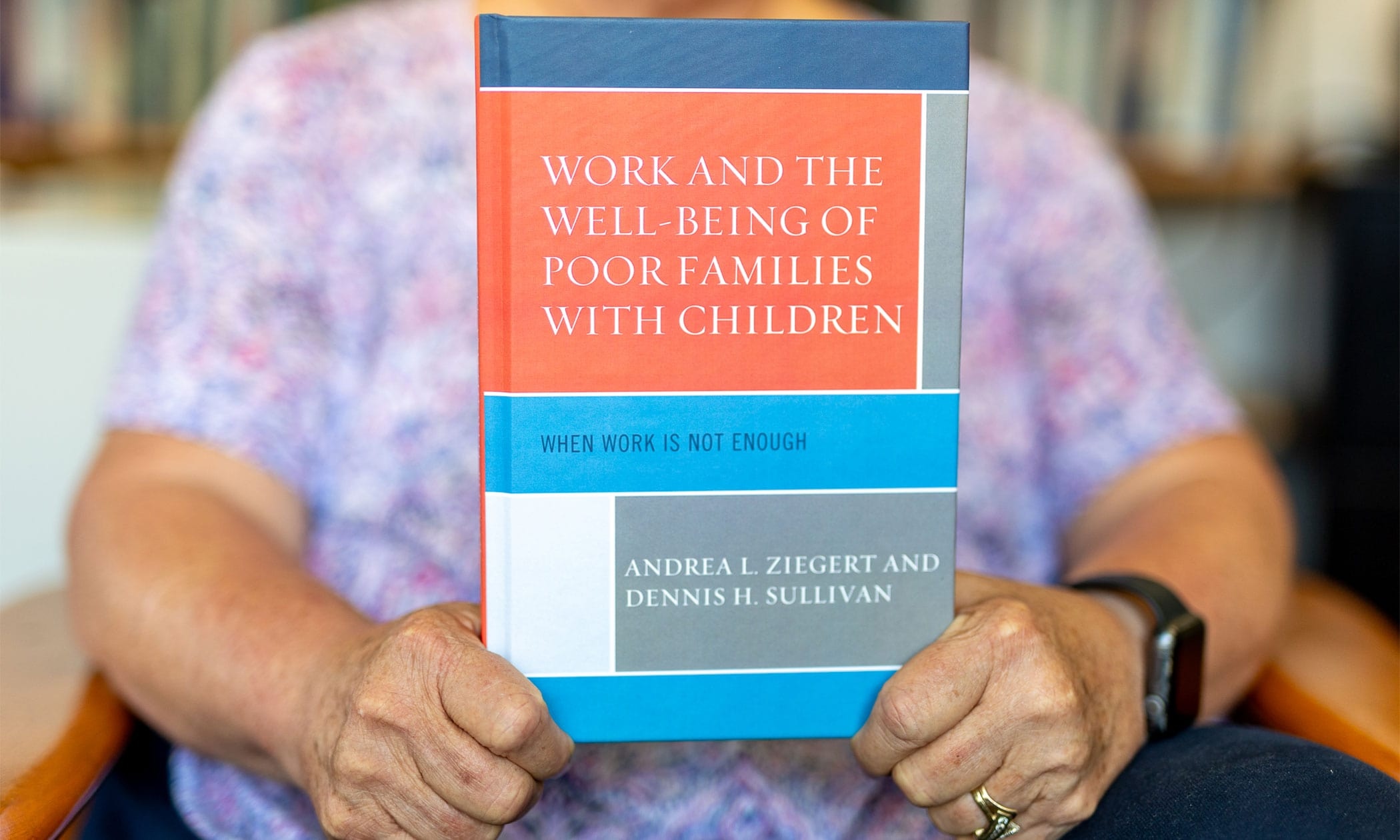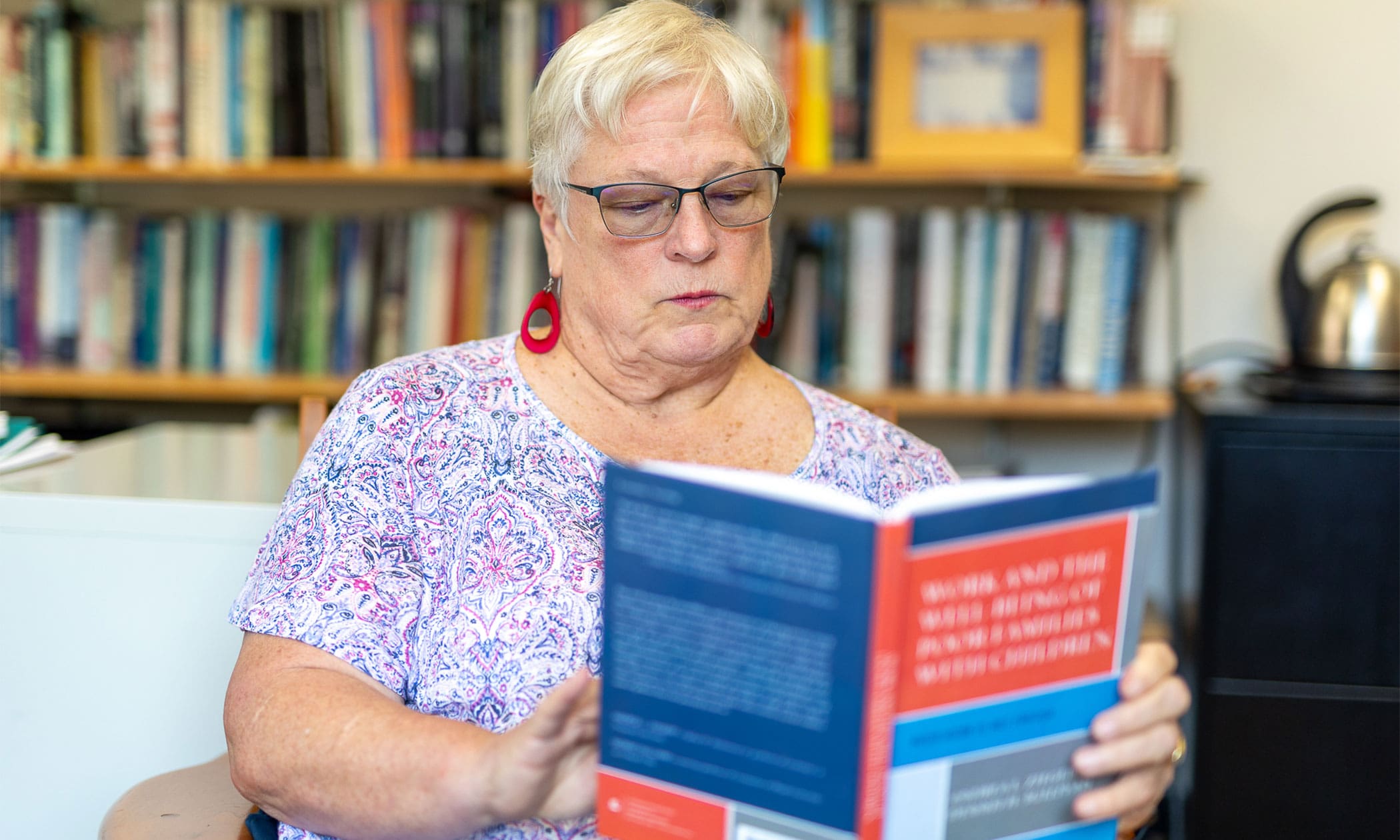“I learn by studying market failure,” says Denison economics professor Andrea Ziegert.
One area of failure that drives much of Ziegert’s research? Income inequality. “Its rise threatens key American values, the American dream, and the principle of meritocracy”, she says.
Income inequality can also lead to the rise of childhood poverty, the focus of Ziegert’s recent book, Work and the Well-Being of Poor Families with Children. It’s a devilishly complex issue that Ziegert and co-author Daniel Sullivan illustrate with more than 200 charts and graphs.
They begin with an overview of today’s family and work dynamics. Demographic shifts have changed family structures, while the marketplace and economic policies have changed U.S. labor markets. “From the standpoint of economic well-being, families are not created equal,” Ziegert says. “They have different health and child care needs, and they don’t have equal access to good paying jobs.”
Programs for poor and low-income families that are supposed to offset some of these negative effects are not helping much either, she says. Research shows that well-intentioned government spending on nutrition, housing and education programs, and health care is having a minimal effect on overall poverty.
Higher employment is important, but it’s only part of the solution, Ziegert says. More than half of poor families already have one or more full-time workers, but their poverty rates aren’t budging because low wages have stagnated or declined over time.
In their book, Ziegert and Sullivan offer several ways to attack income inequality, using combinations of market-tested policies. The common denominators are incentivizing more people to work, and closing the wage gap by raising the current federal minimum wage of $7.25 an hour.
But there’s no silver bullet that will solve childhood poverty, Ziegert says. Some families have members who simply can’t work due to poor health or other factors. Child care is also a persistent need, and lower education attainment among poor families is another barrier.
The United States has the worst poverty rates among highly developed nations, Ziegert says. Childhood poverty is expensive, costing between $800 billion and $1.1 trillion every year due to worsened health, lower earnings, and increased crime when poor children become adults.
But solutions are worth pursuing, she says.
“If we truly care about our children, or even if we only think of children as a future labor resource, we need to make an investment in them,” she says. “And we have to focus especially on those at the bottom, whose only reason for being there was losing the birth lottery.”








